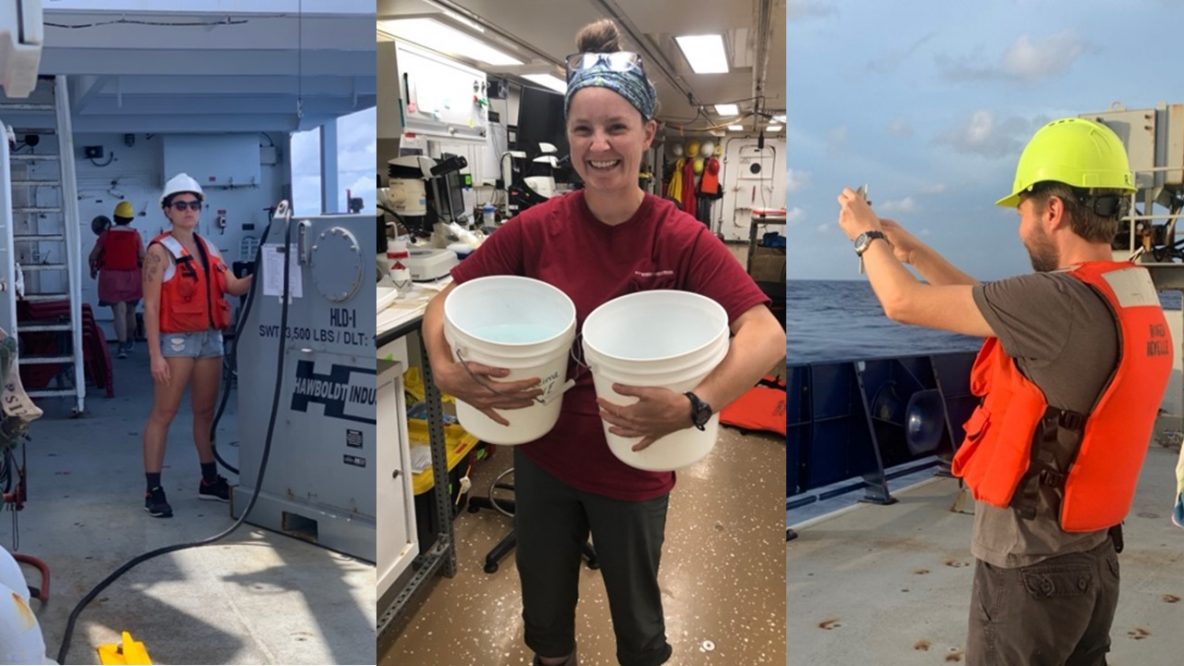“Under the sea, under the sea…everything is better”. Ariel had it right, and some would dare to say zooplankton agree. Yet under the sea is where they are harder to study. As sea-faring zooplankton ecologists, we have figured out a way to bring our zoop friends out from under the sea, where we think it’s better to be in our jars and petri dishes – so we can study them! After 147 net deployments across the Eastern Indian Ocean, the zoop-crew took a deep breath, proud of their efforts, and excited to take a rest before diving into processing to learn what the zooplankton can tell us about the trophic dynamics and health of the Eastern IO!

Claudia women-ing the winch, Grace smiling with buckets of swimming zooplankton, Rasmus checking the angle of the net line.
Our fearless team was led by SIO’s marvelous Moira Décima, and the radiant Rasmus Swalethorp! Joined from down under by CSIRO’s class act Claire Davies, Spain’s creative Claudia Traboni, FSU’s classic Christian Fender, and the not so graceful Grace Cawley, we worked day in and day out, rain or shine bongo-ing our days away!
A typical zooplankton session started with the hunt for our beloved “special shackle” and was quickly followed by carrying the bongo net to the Hobble (Hawboldt) winch. After zip ties were placed, flowmeter readings were taken, and double checking all connections were secure… overboard she went. We tow-yoed it to 30 meters, twice down and back, and we are relieved to say every time she came back! Then our fearless Ring net went to the depths (150 meters) to cover the euphotic zone zoop-soup. Struggling with only a brief deformity, our ring net even took one dip to 350 meters. We love our nets!

Claudia and Rasmus rinsing down nets and functioning as an add for club soda, Rasmus and Moira deploying the bongo.
After our nets came up, to processing they went. We first split them, one half for preservation in formalin (to be looked at for community composition) and then split again for biomass and gut pigment measurements. Gut pigments were measured onboard, and the biomass samples will take a glamours trip back to Scripps where they will be weighed and processed for stable isotopes. This will help us look at trophic levels in the zooplankton communities of the IO.
The zoop-crew even did a few live nets to see our friends in full glory! Those were some of the best times, catching ostracods, looking at really blue copepods, and avoiding the stings of the ‘blue bottles’ (Aussie term), a.k.a. Portuguese-man-of-war, that may have come along for the ride.
Under the sea may be better, but being at sea with this zoop crew was the best! 10/10 would recommend a 34 plus day oceanographic cruise in the Indian Ocean to start off your 2022!

Bongos at sunset.

